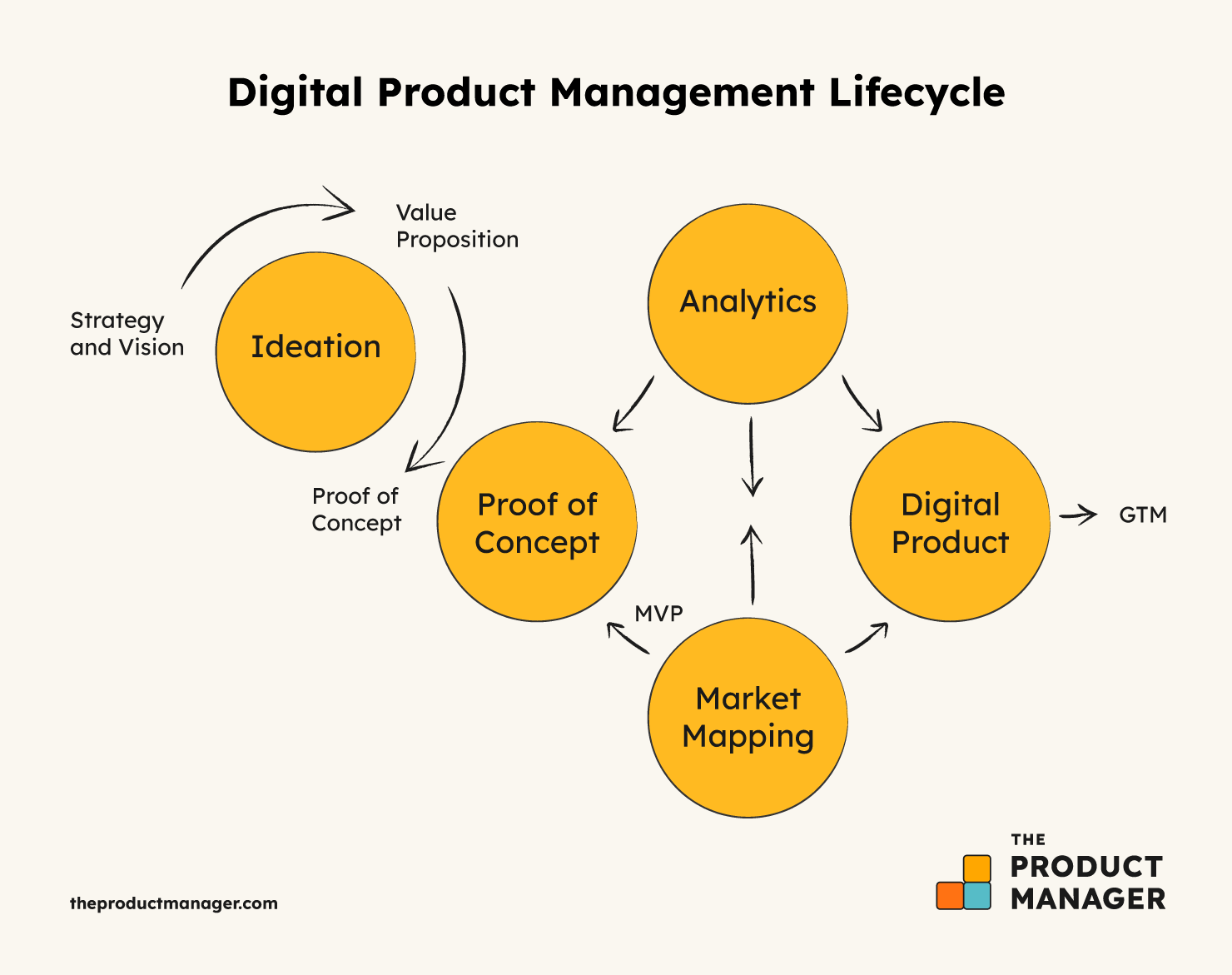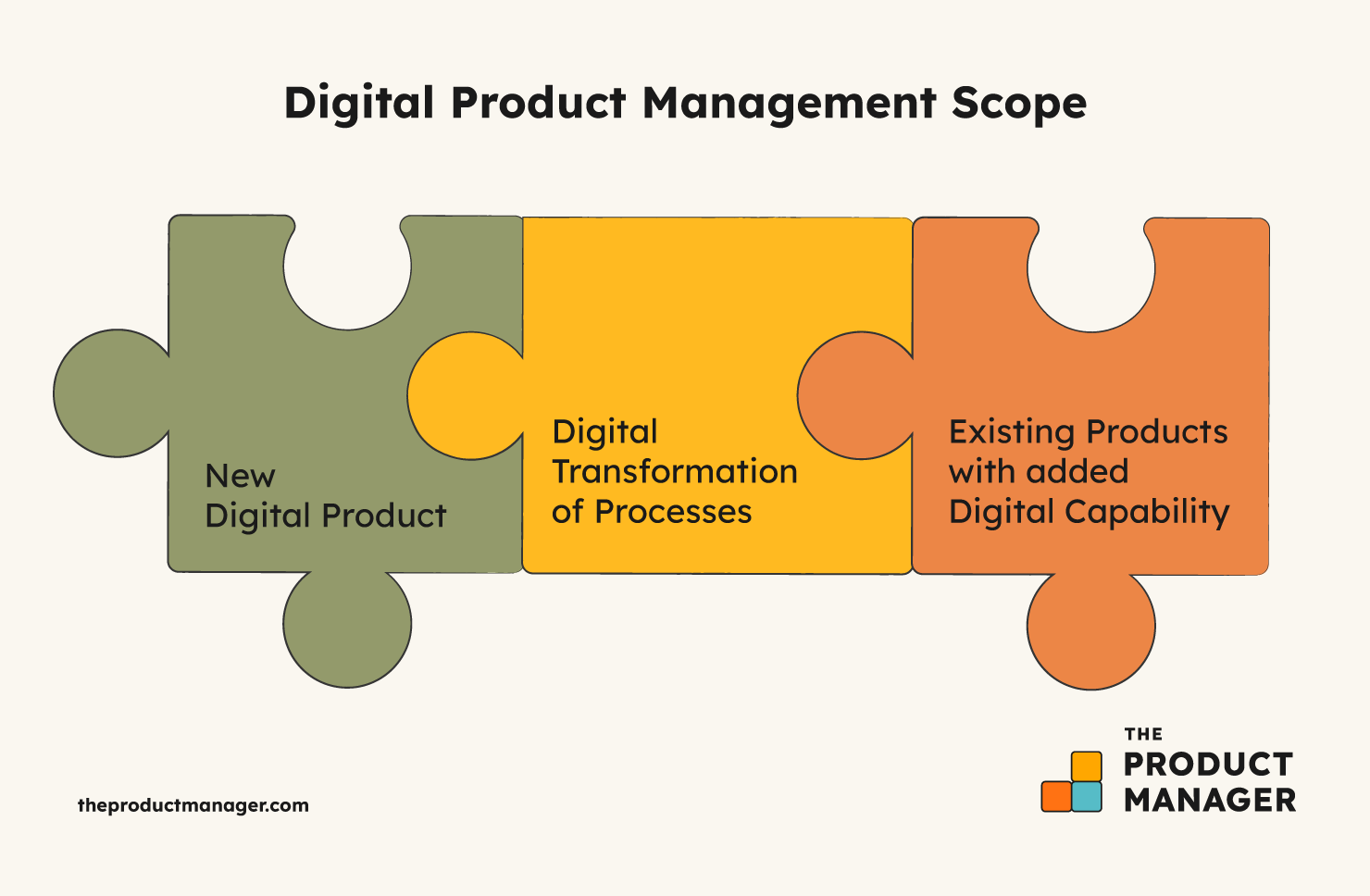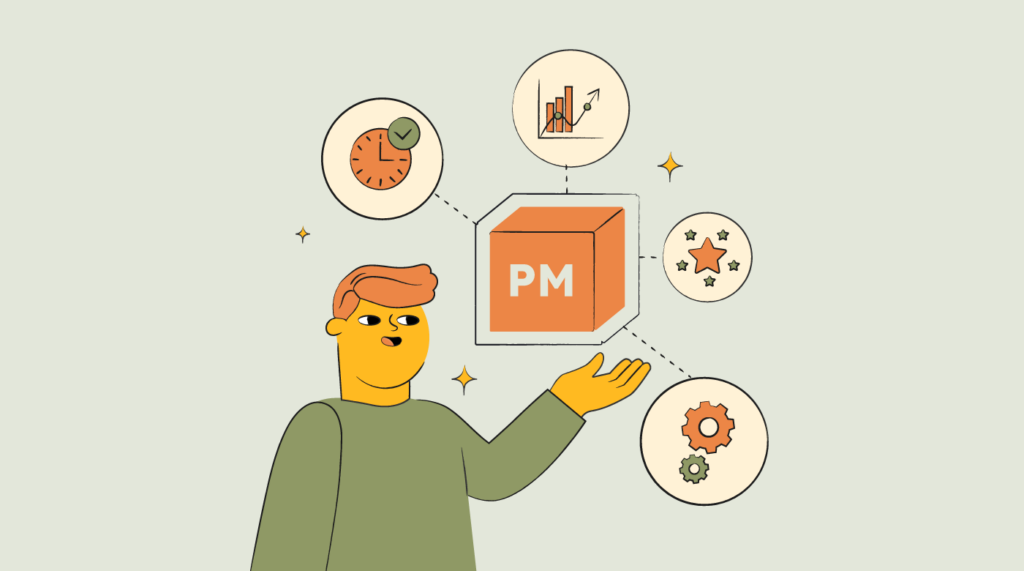Digital product managers develop technology to make users' lives easier. Think of this:
You just had a fabulous time at a friend’s party, and are now heading home. You unlock your phone, click on the ‘Uber App’, add in your pickup and destination locations. You click ‘book/confirm’ and just wait for the cab to arrive. No rushing for public transport, or finding a cab late at night.
Guess who made this seamless experience possible? A Digital Product Manager.
As companies shift focus from operational services to products & digitally-enabled services, the role of the digital product manager is expanding and becoming crucial to organization’s success.
Today, digital product managers are often thought of as folks who own and run apps. But that’s just one perspective. In reality, digital product managers solve problems with technology and bring vision of a solution to life with a great customer experience. They are responsible for the end-to-end life cycle of digital products from concept to launch.
One might notice that the latest tech businesses revolve around digital products. Apple and Microsoft, for instance, are currently the world’s most valuable companies with a market cap of $2.8 trillion & $2.2 trillion in 2022, according to Bloomberg.
Digital Product managers are currently quite sought-after candidates and there are a plethora of opportunities available for anyone wanting to jump into this.
- If you search LinkedIn, over 6000 product manager jobs are posted daily in the U.S. in 2022, a lot of them for digital products
- The average salary for a digital product manager role in 2021 in the U.S. was $96,611 (Product Manager salary guide)
However, building such experiences and using technology to solve problems doesn’t just happen overnight. The role requires understanding end-users, careful planning, market research capability, a knack for UI, stakeholder management, and enabling anything that needs to be done to ensure the product comes to life.
Here are some topics I’ll cover in this article:
- What Is A Digital Product Manager?
- Digital Product Manager Responsibilities
- “Digital” Product Management Scope
- How To Become A Digital Product Manager
- What Are Some Digital Product Manager Skills You Should Have?
What Is A Digital Product Manager?
Digital product managers are the glue that brings together many facets of a successful digital product—customers, design, engineering, operations, sales, marketing, finance, compliance, legal, and more. They own the decisions on pinning down the problem to solve, deciding what gets built when, and also influence the detailed aspects of how it gets built and launched.
An analytical mindset and a combination of communication skills, patience, decision-making, and curiosity help build the right perspective to being a digital product manager.
Digital Product Manager Responsibilities
Digital product managers are not any elite variety of product managers and have to do all the usual product manager tasks and more.
Strategic Planning
Where would you go without direction? Digital product managers should contribute to the overall product vision whether they build it themselves or are involved in the table discussions with leadership. With the vision in mind, digital product managers design a high-level, and immediate strategy around building the digital product. This is often supported by a product roadmap driven by various data points, market analysis, and the unique value that the product would enable.
Parameters like resource availability from development teams, product teams, design, and budget for infrastructure also come into play and digital product managers need to take all of these into account while strategizing.
Related Read: How To Use User Story Mapping To Improve Agile Backlog Prioritization
Market Discovery & Competitive Analysis
Unique value proposition for a digital product comes from the value it creates for its users and how it differentiates from its competitors.
Digital product managers work closely with marketing & sales to gauge insights for the product and define this differentiation, after carefully analyzing the market, competitors and filling in the gaps of user needs. They participate in user interviews themselves or work with customer support teams to understand the pain points.
These insights often become or lead to the “why” for the value proposition a product offers.
Product & Process Conception
Digital product managers ideate and create both product solutions and accompanying processes for internal & external users.
At small orgs or fresh startups, the process can be simple yet cumbersome with the digital product manager doing almost everything from conceptualizing to creating business cases, doing wireframes, managing stakeholders, even doing a bit of sales.
At larger established organizations these processes are generally established. A digital product manager still partakes in the whole product life cycle, but here they would work with people leading individual pieces of the life cycle.

Managing Execution & Delivery
Digital product managers are the owners of the product backlog. It’s a laundry list of items that define small features to large components in a digital product. The items could range from “adding a button” to “creating a machine learning-led algorithm to define user preferences”.
As new requests or errors come in, they get added to the backlog according to severity and need. Prioritization is key here. Digital product managers prioritize and define which items to build when and work with the engineering/ tech managers closely to get these executed and delivered in set timelines.
Pricing & Go-to-Market
Building the product is not the end. The life cycle completes when it reaches the hands of the end-user. Digital product managers work with project management and digital marketing teams to either define the go-to-market strategies and pricing or support them with any information. This is crucial, as validation of the product hypothesis gets realized with this step.
Other Responsibilities
All of this might feel like a lot. It surely is a role with a wide range of responsibilities covering the entire product lifecycle.
I’m not done yet.
With digital technologies becoming more and more accessible and crucial to daily life, there are a few other responsibilities that digital product managers must partake in.
For apps that have application programming interface (API) either internal or third party, digital product managers oversee the API, identify & own partnerships, manage the overall ecosystem, and more. There's also a specific role carved out for such positions sometimes called the “API Product Manager”.
We cannot deny the elevated role that design and data now play in digital products defining user ease, retention, adoption, and more. Digital product managers should be wary of the UX, UI components and/or work with design teams to ensure product success. They should identify key metrics created from product interaction either real-time or otherwise; derive insights and deduce what the data tells.
It’s unnerving, it’s overwhelming, it’s electrifying.
Related Read: 7 Product Analytics Books To Make Better Data-Driven Decisions
“Digital” Product Management Scope
We can presume that digital product management got its wings with the inception of the likes of FAANG. User centricity and continuous feedback is key to digital products; however, digital products are not always the brand new shiny apps/web apps.
Existing businesses are transforming their status quo by bringing in a piece of digital transformation for customer ease. Established on-prem products are finding new visions and scaling to grow. Here’s a few ways to look at digital product management scope:

New Digital Products
Shopify, an ecommerce platform that allows several businesses to build their own ecommerce and operate seamlessly was new conceptually. It’s not that ecommerce didn’t exist at the time. But when the founders discovered a gap that was causing discomfort for several small businesses, they understood the user, the market, and solved the problem by building a digital product for it.
It didn’t just become a digital product. It was a solution to a problem.
In such products, digital product managers would have to have a deep understanding of the problem, set the right market expectation, build and incorporate feedback in continuous iterations and grow quickly. They would start from conception, to design, development, delivery, go to market, and ongoing adaptation to market needs.
Existing Products With Added Digital Capability
Product managers here would look at existing user data, derive insights, and enhance user experience.
For example, air conditioners have been in use for years and so have their remotes to adjust the relevant parameters. However, there are moments when the remote is lost, or too far away after a tiring day. Digital product managers somewhere must have observed this user behavior to see that users would rather freeze than move an inch to change temperature. They built an app for mobiles (which are almost never away) that could now control an AC and solved a problem.
Analytics on Google Calendar that classifies hours spent per day/week and dark mode in android that helps ease eye strain are some other examples of digital capabilities tied to existing products.
Digital Transformation Of Processes
Imagine age-old processes being renewed with digital in them, like the role of the web in the supply chain industry and how it has helped processes be more productive for parties at both ends.
AbInBev, the world’s largest brewer, known for its brands Budweiser, Stella Artois, and others created a new digital product called BEES. It’s an ecommerce platform connecting millions of small to medium-sized businesses (SMBs) who were facing supply chain issues like optimizing inventory, tracking dispatch, and were operating in silo.
A digital product manager, probably in love with one of their brands, looked at all the existing processes and found out pain points for their customers like ensuring adequate supply was available at all points of sales. Today, BEES is more than just a digital transformation for AbinBev. It's a solution that enables personalized end-to-end journeys by capturing several data points.
Digital product managers here would play a key role in understanding the depth of existing processes, doing an as-is, discussing possible alternatives with the users, and getting stakeholder buy-in.
Expertise in the relevant industry would be an advantage some would say; but hey, a new perspective could bring in a whole new innovation wave.
All of these together provide a huge range for anyone to experiment with what a Digital Product Manager does. Which brings us to the question:
How To Become A Digital Product Manager?
The digital product management role is quite extensive as discussed earlier and has a significant impact on businesses. There are various ways one could get into the product management world. It could be straight after education, a lateral move, or a promotion.
I myself entered the world of product management accidentally. I started my career as a QA developer, moved on to being a business analyst, and solved various problems for clients as a management consultant while doing market research, building GTM, and doing estimates. I just hadn’t done it all at once.
So when I was offered the opportunity, I took a leap of faith that later resulted in me helping simplify complex healthcare workflows and humoring my own learnings.
I’d say there’s no one size fits all approach. But there are several things you can do to be ready while you hunt for your digital product adventure.
Acquire The Basic Qualifications
Usually, organizations tend to opt for product managers who have a proper education. Possible educational qualifications that could help get your foot in the door include:
- Bachelor's degree in computer science, product management, business, or related fields
- Masters degree in similar fields either full-time or otherwise. Some big brands do prefer folks who are MBAs, but there are many opportunities that don’t ask for a masters.
Learn The Skills
One should ideally master the product-related hard skills regardless of your qualifications. Get them out of the way. These could be how to do customer research, ability to identify market opportunities, product modeling, roadmapping, writing user stories, understanding software development lifecycle, and more.
Get Certified
Digital product management certifications are useful for building credibility along with qualifications. These can be about digital product management fundamentals, learning agile methodologies, design thinking fundamentals, and even something specific like product strategy.
These could be a combination of live classes and pre-recorded videos combined with activities and assignments that boost your skills.
You can also learn from free resources like Youtube videos, blogs, and tweets. There are several established product folks who love to share their learnings with peers and aspirants. Find a few of them and follow their materials online.
Apply For An Internship & Network
Observe what’s happening around you and contribute to conversations. Digital product managers thrive in digital communities. Join communities on LinkedIn, Facebook, Twitter, and network and make friends with anyone you find of interest.
Build A Product Management Specific Portfolio
Once you learn the basics, you’ll also understand how to narrow down on a problem, do customer research, build a go-to-market strategy, and conduct user interviews.
Look through your career history and identify opportunities where you might have played these roles. Highlight them and build a portfolio around it.
If you are a new or existing product manager, here’s a few ways to discover product opportunities:
- Analyze the usability of any existing app on your mobile phone and identify possible opportunities to transform and improve a company’s products
- With new products, identify what really interests the consumer
- Understand how product marketing works and how to define action strategies
- Build digital proof of concepts
What Are Some Digital Product Manager Skills You Should Have?
There’s more to digital product development than is mentioned in a job description. Digital product managers should be:
- Entrepreneurial: to see the bigger picture
- Tech-savvy: to translate the tech landscape and the omnichannel realm to different stakeholders
- Creative and critical: to think of new ideas and define the product strategy and product vision
- Great communicators: to collaborate and work with not just the tech team but marketers, data analysts, UX and UI designers, the sales team, marketing, social media, and customer service employees.
Next Steps
Is your mind already buzzing with ideas on improving digital products? Or do you feel like starting right away in a fast-paced environment solving user problems? Start your career path towards digital product management right away.
Being a digital product manager lets you feel the excitement of building something and the joy of seeing customer adoption that leads businesses to success. Subscribe to The Product Manager newsletter to keep yourself updated with all things product.
Related Read: Product Manager In Digital Transformation: How To Make It Work
Related Podcast: People Driven Development (with Sam Higham from Glean)
Also Worth Checking Out: How To Hire A Stellar Product Manager With This Interview Roadmap


